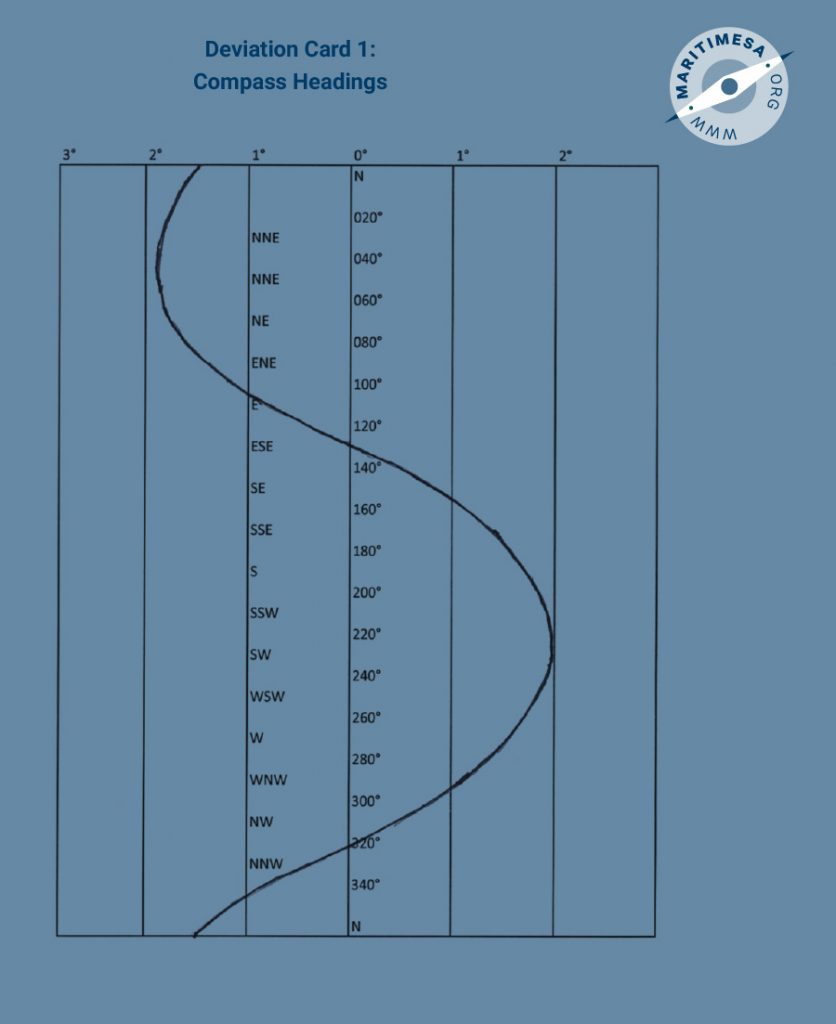Variation
Variation is defined as the angle between the true and magnetic meridians. It is said to be easterly if the
direction of magnetic north lies to the east of the true meridian and westerly if it lies to the west. Variation can b e obtained from a special isogonic chart where all the places of equal variation are joined by what is called isogonic lines. It can also be obtained from ordinary charts where the variation for the area is given for a particular year as well as the annual change. It is usually recorded inside each compass rose.
Magnetic bearing
A magnetic bearing is the angle between the direction of a place or object and the magnetic meridian passing through the site of observation. To distinguish it from a true bearing, a magnetic bearing has the suffix (M) added to it, ie 070° (M).
Deviation
Because of the physical characteristics of iron and steel, a magnetic compass placed in a vessel either constructed of steel or having a strong component of steel onboard, will be adversely affected. The magnetic properties of steel will cause the compass needle to deviate from the magnetic meridian. The difference between the magnetic meridian and the direction in which the compass needle points is known as deviation. The direction in which the compass needle points is known as compass north and to distinguish bearings taken with the compass from either true or magnetic bearings, the bearing is followed by the suffix (C), ie 129° (C).
If the compass north lies to the east of magnetic north, the deviation is said to be easterly. If to the west, it is called westerly.
Because the compass is placed on the bridge which is either closer to the bows or the stern, the iron or steel in the ship is not symmetrically arranged in relation to it. This means that every time the ship changes course, the iron/steel will change relative to the compass card and will either attract or repel the needle by varying amounts. The deviation will therefore vary with each alteration. The amount of deviation on each course heading is determined by “swinging” the ship. In order to counter the deviation, permanent magnets and soft iron correctors are placed at the compass. It is impossible to correct the deviation completely and the amount that remains is either tabulated in a “Deviation Table” or as a deviation curve on a graph. Below are examples of each:

Deviation card 1 – compass headings.

Deviation card 2.


